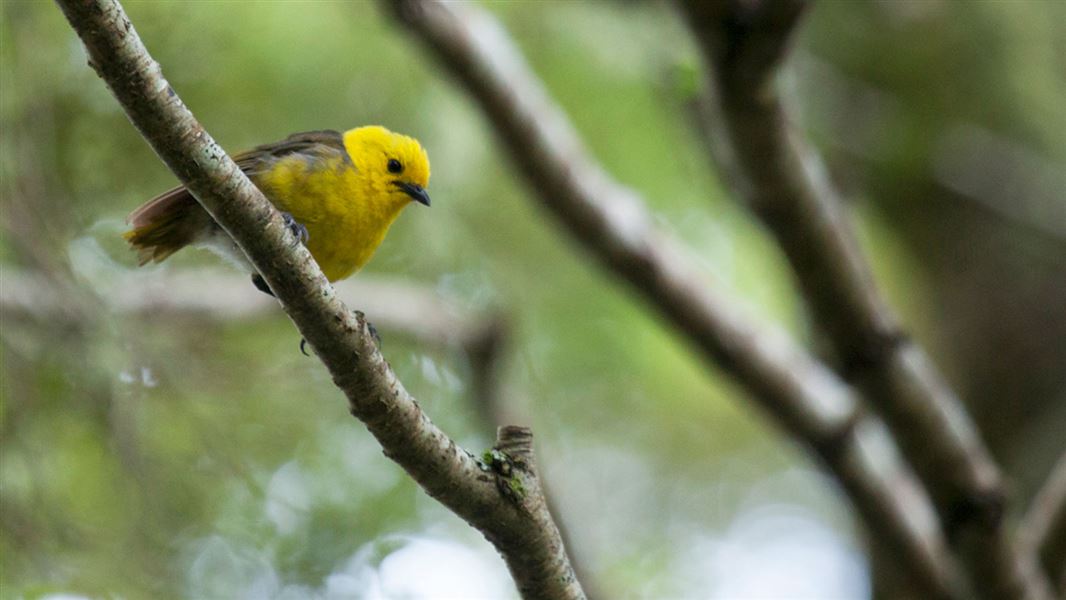The mohua is a small, insect eating bird which survives in isolated populations in South Island and Stewart Island beech forests.
This bright yellow-headed bird nests in tree holes. Here it’s vulnerable to pests that climb, like rats, stoats and possums.
Rat plagues after beech seeding have decimated mohua populations.
1080 treatment lifts nesting success
We have monitored mohua in the Dart and Routeburn valleys in Mount Aspiring National Park over several years both before and after aerial 1080 predator control.
Nesting success was on average twice as high after 1080 treatment than without it, in 2006 and 2009.
Our researchers also tracked mohua after a 1080 operation in 2014. There was no comparison ‘non-treatment’ area that year as we needed to protect all our key mohua populations with pest control due to the widespread beech forest mast or seeding event and threat of rat plagues.
In the 2015 summer 89% of mohua nests produced chicks in the Dart and Routeburn valleys. And 97% of adults survived.
Without predator control high stoat levels would have wiped out most nests and killed adult birds.
